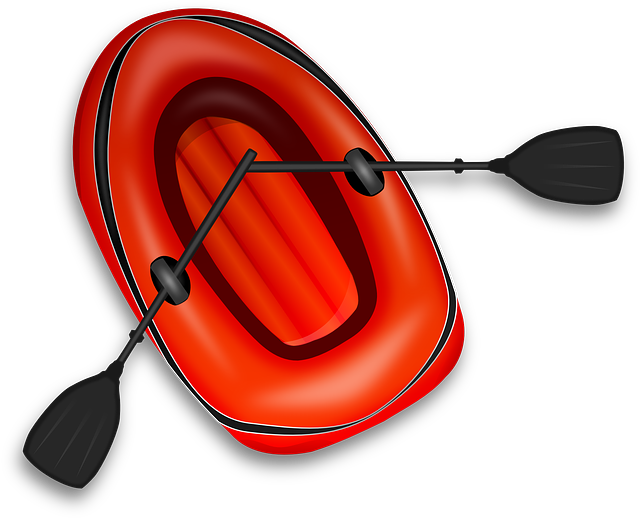To ensure your boat battery remains reliable and lasts as long as possible, it's crucial to understand its specific maintenance requirements, whether it's a lead-acid, AGM, or lithium ion type. Regular checks on the electrolyte levels and terminal cleanings are part of the routine upkeep, along with matching your battery size precisely to your boat's power needs to avoid overworking it. Load management is key to prevent premature wear, and employing smart battery monitors can help tailor a charging profile that optimizes your battery's performance. Upgrading to high-efficiency boat batteries can provide superior charge retention and longevity compared to traditional options. Additionally, using intelligent battery chargers with multi-stage charging processes is essential for delivering precise, tailored charging cycles to maintain peak battery performance. Safety is paramount when handling boat batteries; ensure they are stored in well-ventilated areas away from flammable materials and that all maintenance is performed in line with safety protocols and maritime regulations to protect both your vessel and the marine environment. By adhering to these practices, you'll enhance your boating experience with a consistently powered and longer-lasting battery system.
10 Best Ways to Extend Your Boat Battery Life
Boaters know that a reliable power source is crucial for both safety and comfort on the water. Your boat’s battery system plays a pivotal role, powering everything from navigation systems to onboard entertainment. To ensure your batteries deliver optimal performance, this article outlines essential strategies for maintenance, charging, and load management, all aimed at maximizing your boat battery’s lifespan. From understanding your battery system to embracing eco-friendly practices, learn the steps to keep your power supply robust and ready for every voyage. With expert advice on intelligent chargers, regular inspections, and alternative energy solutions, you’ll be equipped with the knowledge to extend your boat battery’s life effectively.
- Understanding Your Boat's Battery System
- Proper Storage and Maintenance for Long-Term Battery Health
- Optimal Charging Practices to Maximize Battery Lifespan
- The Importance of Regular Inspections and Monitoring
- Strategic Load Management to Prevent Early Discharge
- Upgrading to High-Efficiency Batteries for Enhanced Performance
- Advanced Battery Chargers: Invest in Intelligent Technology
- Essential Safety Precautions and Compliance with Regulations
Understanding Your Boat's Battery System

To effectively extend the life of your boat’s battery system, a foundational understanding of how it operates is crucial. Your boat’s battery, typically a deep-cycle lead-acid or AGM (Absorbent Glass Mat) battery, stores energy required for starting and powering various onboard electrical systems. These batteries are designed to handle multiple discharge/recharge cycles unlike their automotive counterparts. Regular maintenance and optimal usage practices can significantly influence the longevity of your boat battery. Firstly, it’s essential to know the types of loads your boat’s battery supports – whether it’s for cranking the engine or powering trolling motors, electronics, or lighting. Understanding the amp-hour rating and how deep you can discharge your battery without compromising its ability to hold a charge is key. Monitoring the state of charge through regular checks and using a smart battery charger that’s compatible with your boat battery type can prevent overcharging or undercharging, two conditions detrimental to battery health. Additionally, ensuring that connections are clean, tight, and corrosion-free minimizes internal resistance, which in turn optimizes the performance and lifespan of your batteries. Regular servicing, including topping off electrolyte levels if necessary, and keeping your batteries charged during periods of non-use can also contribute to a longer battery life. By adopting these practices, you can ensure that your boat’s battery system operates efficiently and reliably, enhancing the overall experience on the water.
Proper Storage and Maintenance for Long-Term Battery Health

To maintain optimal battery health over extended periods, proper storage and consistent maintenance are key for your boat’s batteries. Firstly, choose a storage location that keeps the batteries at a moderate temperature, avoiding both extreme heat and cold. This climate control helps prevent thermal runaway in lithium-ion batteries or excessive discharge in lead-acid varieties, which can lead to sulfation and reduce battery capacity. Regularly check the water levels in flooded lead-acid batteries, ensuring the electrolyte is at the correct concentration to prevent corrosion and ensure conductivity. For all types of boat batteries, a monthly maintenance charge during storage can help preserve the charge and keep the cells healthy. In addition, prior to storing your batteries, fully charge them to 100%, as this minimizes the amount of sulfate that forms on the lead plates in lead-acid batteries, which can impair performance upon reactivation. For sealed or AGM batteries, their valve-regulated nature makes them more forgiving in terms of storage, but they still benefit from a periodic equalization charge to maintain cell balance and longevity. Regular inspections for corrosion on terminals and connections, as well as cleaning and applying a protective coating, will prevent battery leakage and ensure secure electrical connections when you’re ready to set sail again. By following these storage and maintenance practices, you can extend the life of your boat batteries and ensure they are always ready for your next adventure on the water.
Optimal Charging Practices to Maximize Battery Lifespan

When it comes to ensuring your boat’s battery has a long and healthy lifespan, adhering to optimal charging practices is paramount. Regular maintenance charging, which involves topping up the battery when it falls below a certain voltage after use, can significantly extend its life. It’s crucial to invest in a quality charger that’s compatible with your boat battery type—be it lead-acid, AGM, or lithium ion—as different batteries have unique charging requirements. Avoid overcharging by setting the charger to the correct amp and voltage settings; this prevents unnecessary strain on the battery and minimizes water loss in lead-acid batteries. Additionally, storing your boat battery at a partial state of charge, typically around 40 to 60 percent for deep cycle batteries, can reduce sulfation buildup and maintain its efficiency over time. Regularly checking the battery’s electrolyte levels and ensuring proper water filtration in lead-acid units will also help in maintaining its performance. By following these charging best practices, you can safeguard your boat battery against premature aging and ensure it remains reliable for your boating adventures.
The Importance of Regular Inspections and Monitoring

Regular inspections and monitoring are pivotal practices for maintaining the longevity and performance of your boat battery. Unlike car batteries, which are often jump-started or replaced after issues arise, marine batteries require more attentive care due to their exposure to harsh environments and vibrations during operation. Consistently checking the battery’s voltage, state of charge, and overall condition can help you anticipate and prevent premature failure, ensuring your boating adventures are uninterrupted by unexpected power loss.
An effective way to monitor your boat battery’s health is through regular load testing. This process assesses how well the battery holds a charge under different loads, providing insights into its capacity to start the engine or power electrical devices. Additionally, inspecting the terminals and connections for signs of corrosion, tightening any loose components, and verifying that the water levels in lead-acid batteries are appropriate are all critical steps. By keeping a close eye on your boat battery, you can extend its life significantly, avoiding the inconvenience and expense associated with frequent replacements or being stranded on the water due to a dead battery. Regular maintenance isn’t just about the physical inspection; it also involves understanding the battery type you have—whether it’s lead-acid, AGM, or lithium ion—as each has its own specific care requirements. Taking these steps will not only improve your boating experience but also ensure the safety and functionality of your vessel’s power supply.
Strategic Load Management to Prevent Early Discharge

To effectively extend the life of your boat battery, strategic load management is a critical aspect to consider. Boat batteries are often subjected to variable conditions and diverse load types, which can lead to early discharge if not carefully managed. A key approach to prevent this is by understanding the different types of loads your battery encounters. Regular loads include the consistent draw from navigation equipment and depth finders, while occasional loads might be the starting motor or trolling motor. By assessing the nature and frequency of these loads, you can create a charging profile that optimizes battery health. For instance, using a smart battery monitor can help you identify patterns and peak load times, allowing for preemptive action to alleviate strain on your battery.
Another crucial element in managing your boat’s battery life is ensuring the battery is properly sized for the intended loads. An oversized battery might seem beneficial, but it can lead to underutilization and reduced lifespan. Conversely, an undersized battery will struggle to meet demands, leading to a higher likelihood of early discharge. It’s essential to calculate your boat’s power needs accurately and select a battery that can handle these without consistently running at its peak capacity. Regular maintenance, such as topping up electrolyte levels and cleaning terminals, also plays a role in maintaining optimal battery performance. By implementing these strategies, you can significantly enhance the longevity of your boat battery and ensure it operates reliably for all your nautical adventures.
Upgrading to High-Efficiency Batteries for Enhanced Performance

When it comes to optimizing the performance and longevity of your boat’s electrical system, upgrading to high-efficiency batteries is a strategic move that can significantly extend your boat battery life. Modern advancements in battery technology have led to the development of high-efficiency batteries that offer superior charge retention, higher cranking amps, and greater overall lifespan compared to traditional lead-acid models. These state-of-the-art batteries are designed with materials and construction methods that minimize self-discharge rates and maximize energy density. As a result, boat owners who make the switch can rely on their batteries for consistent starts and longer periods between charges, which is particularly beneficial during extended trips or when the boat is stored for long durations. Additionally, the reduced need for frequent recharging means less maintenance over time, translating to cost savings and a more reliable power source when you’re out on the water. When selecting high-efficiency batteries for your boat, consider factors such as capacity, size constraints, and compatibility with your vessel’s electrical system. The investment in these upgraded batteries can pay dividends by enhancing performance and ensuring that your electronic devices and navigation systems are always ready to go, no matter how far you sail from the shore.
Advanced Battery Chargers: Invest in Intelligent Technology

When it comes to maintaining the longevity and performance of your boat’s battery, investing in an advanced battery charger with intelligent technology is a game-changer. These sophisticated chargers are designed to communicate with your boat battery, providing optimal charging cycles tailored to the specific needs of your battery type. Unlike traditional chargers that use one-size-fits-all approach, smart chargers monitor battery conditions in real-time, adjusting their charge delivery accordingly to avoid overcharging and extend the battery’s lifespan. This level of precision ensures that your boat battery receives exactly what it needs to maintain peak performance, regardless of whether you’re on a long-haul journey or storing your vessel for an extended period. With features like automatic recharge, maintenance mode operation, and multi-stage charging processes, these intelligent chargers are the ideal companion for any boater looking to maximize their battery’s potential and reduce the likelihood of being stranded out on the water due to a dead battery. By integrating state-of-the-art battery monitoring technology into your boat’s electrical system, you can enjoy a more reliable and consistent power supply, ensuring that every journey is as safe and enjoyable as possible.
Essential Safety Precautions and Compliance with Regulations

When prioritizing safety and compliance, understanding and adhering to regulations is paramount when dealing with boat batteries. Safety precautions are non-negotiable for maintaining optimal battery health and ensuring the well-being of all onboard. Firstly, always use and store boat batteries in well-ventilated areas due to the presence of hydrogen gas, which is a byproduct of the charging process. Ensure that the battery compartment is free from flammable materials and that it is properly sealed to prevent accidental sparks or short circuits. Regular inspections for corrosion on terminals and cables should be part of your routine; clean any corrosion promptly with a baking soda solution, using appropriate safety gear like gloves and eye protection.
Moreover, compliance with maritime regulations is crucial to avoid legal repercussions and ensure environmental safety. Familiarize yourself with the relevant local, state, and federal laws that govern the disposal and handling of batteries, particularly those containing lead-acid or other toxic substances. Proper disposal prevents harmful chemicals from entering water systems, which could be detrimental to aquatic life and surrounding ecosystems. Keep spare batteries in their original packaging until ready for use, and never dispose of old batteries in the ocean or any water body. By diligently following safety protocols and legal requirements, you can extend your boat battery life while safeguarding your vessel, crew, and the environment. Remember to always carry out battery maintenance tasks with caution, using the correct tools and following manufacturer guidelines to maintain longevity and performance.
Effective management of your boat’s battery system is pivotal for ensuring sustained performance on the water. By implementing the strategies outlined in this article, from understanding your battery setup to engaging in regular maintenance and monitoring, you can significantly extend your boat battery life. Optimal charging practices, strategic load management, upgrading to high-efficiency batteries, and leveraging advanced chargers with intelligent technology are all key components that contribute to a robust and reliable power source. Adhering to safety precautions and complying with regulations further ensures both your well-being and the longevity of your marine battery. With these best practices in mind, you can confidently set sail, knowing your boat’s power supply is in top condition.
